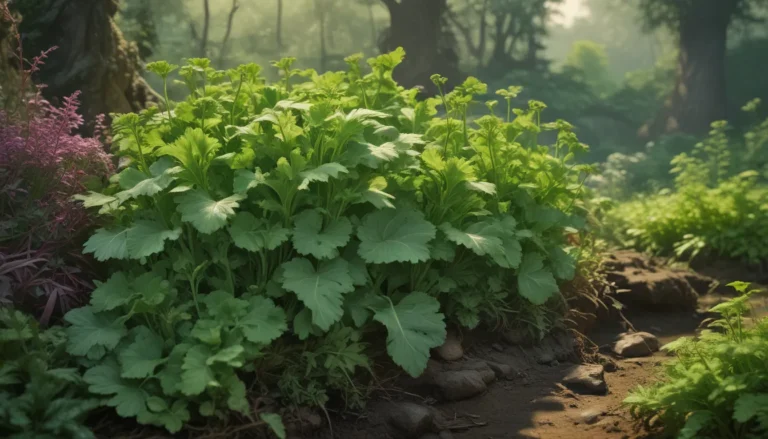A Comprehensive Guide to Growing Japanese Yews: Everything You Need to Know

If you’re looking for an elegant evergreen shrub to add to your landscape, look no further than the Japanese yew, a stunning plant with unique needle-like leaves that set it apart from other conifers. In this detailed guide, we’ll explore everything you need to know about growing and caring for Japanese yews, from propagation to long-term maintenance.
What Are Japanese Yews?
The Japanese yew, scientifically known as Taxus cuspidata, is a member of the Taxaceae family native to China, Japan, North Korea, South Korea, and Russia. Known for its striking appearance and tolerance to various conditions, Japanese yews are hardy in USDA Zones 4 to 7, making them suitable for a wide range of climates.
Key characteristics of Japanese yews include:
- Needle-like leaves resembling small blades
- Red berries on female plants that attract wildlife
- Dioecious nature with separate male and female plants
- Longevity, with some specimens living over a thousand years
Japanese Yew Propagation
While growing Japanese yews from seeds can be a time-consuming process, propagation via cuttings is a quicker and more reliable method. Here’s how you can propagate Japanese yews from cuttings:
- Take four- to six-inch cuttings from healthy shoots in late summer to early fall.
- Apply rooting hormone to the leafless section of the cuttings.
- Plant the cuttings in containers filled with sand and place them in a sunny spot.
- Keep the sand moist until roots develop, then harden off the cuttings before transplanting.
Alternatively, you can purchase nursery-started Japanese yew plants for faster results.
How to Grow Japanese Yews
Once you’ve established your Japanese yews, proper care is essential to ensure their health and longevity. Here are some key tips for growing Japanese yews:
- Provide full sun to partial shade exposure with protection from wind.
- Ensure well-draining soil with a pH of 6.0 to 6.5 and average organic matter content.
- Water deeply but allow the top three inches of soil to dry before watering.
Proper climate, soil, and water conditions are crucial for the success of Japanese yews in your garden.
Pruning and Maintenance
Japanese yews, like other yew species, are highly tolerant of pruning and shaping. Early spring is an ideal time to prune your Japanese yews to maintain their desired shape or size. Remember to:
- Avoid removing more than one-third of the aboveground greenery.
- Remove damaged or diseased branches promptly.
- Mulch around the root zone to protect the roots and suppress weeds.
During winter, reduce watering to prevent desiccation, especially when the ground is frozen.
Japanese Yew Cultivars to Select
If you’re looking for unique variations of the traditional Japanese yew, consider these cultivars:
- Capitata: A tall, tree-like form with female specimens producing an abundance of fruit.
- Densa: A dwarf variety with a spreading growth habit suitable for small spaces.
- Nana Aurescens: A slow-growing variety with golden yellow foliage that matures to dark green.
Remember to plant both male and female specimens if you want fruit production in your Japanese yew garden.
Managing Pests and Disease
Proper care and vigilance are essential in preventing common pests and diseases that can affect Japanese yews. Here are some tips for managing pests and diseases:
- Protect against deer with repellents or fencing to prevent defoliation.
- Control insect pests like black vine weevils and mealybugs with organic sprays.
- Prevent diseases like Phytophthora rot and root rot by maintaining good soil drainage.
Sanitary gardening practices and regular inspections can help keep your Japanese yews healthy and vibrant.
Best Uses for Japanese Yews
Japanese yews are versatile plants that can serve various purposes in your landscape, including:
- Foundation plantings
- Hedges
- Bonsai
- Screens
- Topiaries
Whether you want to create a formal hedge or a unique topiary, Japanese yews offer endless possibilities for creative landscaping.
Quick Reference Growing Guide
Here’s a quick summary of important information about Japanese yews:
- Plant Type: Evergreen woody shrub
- Native to: China, Japan, North and South Korea, Russia
- Water Needs: Moderate
- Hardiness (USDA Zone): 4-7
- Bloom Time / Season: Spring
- Exposure: Full sun to part shade
- Soil Type: Sandy loam, average fertility
- Height: 3-30 feet
- Spread: 3-30 feet or more
- Common Pests and Diseases: Black vine weevils, mealybugs, Phytophthora rot, root rot
Final Thoughts
Japanese yews are a fantastic addition to any landscape, offering beauty, versatility, and low maintenance requirements. With the right care and attention to their specific needs, Japanese yews can thrive and enhance the aesthetic appeal of your garden. Remember to follow the tips and guidelines provided in this comprehensive guide to grow and care for Japanese yews successfully.
Have you grown Japanese yews in your garden? Share your experiences and tips in the comments below! And if you’re interested in learning more about evergreen shrubs, check out our other informative guides on growing and caring for a variety of plants.





